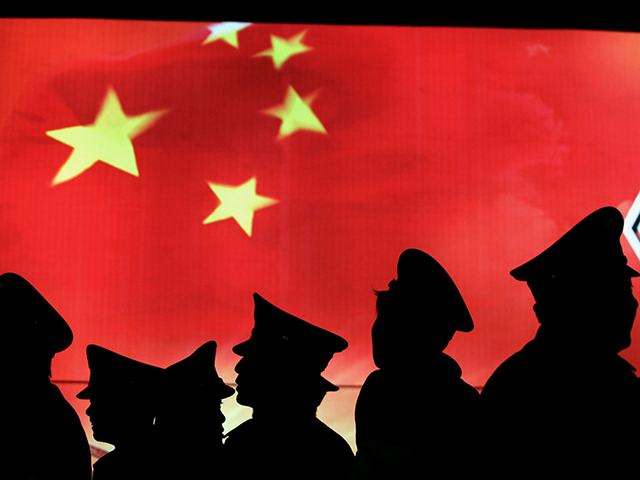Beijing has allegedly launched strategic preparations for a potential war with Taiwan according to an audio recording purportedly leaked from a recent and top-secret Chinese military meeting that went viral across Indian media Monday, the Indo-Asian News Service (IANS) reported.
“We won’t hesitate to start a war, crush Taiwan’s independence and strong enemies’ plots, and resolutely defend national sovereignty and territorial integrity,” the meeting’s presiding leaders were heard saying in the allegedly leaked audio clip, which remained unverified at press time on Tuesday.
IANS, WION, the Hindustan Times, and various other Indian news outlets reported key contents of a 57-minute audio file posted on YouTube and transcribed into English by Lude Media on May 23. The audio clip was allegedly recorded on May 14 during a high-level meeting of top leaders of the Chinese People’s Liberation Army (PLA) and the Chinese Communist Party, particularly from China’s strategically important Guangdong province.
The publishers of the audio claimed that Chinese military members present at the meeting included Zhou He, a major PLA general and commander of the Guangdong Military Region, and Wang Shouxin, a political commissar of the Guangdong Military Region. The meeting’s alleged goal was to prepare Guangdong party officials to transition from a “peacetime to wartime” footing with an eye toward a possible military conflict with nearby Taiwan, which Beijing claims as part of China.
The audio, if legitimate, indicates that China’s ruling Communist Party assigned several “mobilization tasks” to Guangdong Province in accordance with the transition, including the “activation of 140,000 military personnel, 953 shops, and 1,653 units/sets of unmanned equipment. Other resources to be requisitioned include 20 airports, six repair and shipbuilding yards, and 14 emergency transfer centers as well as ‘grain depots, hospitals, blood stations, oil depots, and gas stations,'” Taiwan News reported May 24.
Leaked audio reveals Chinese commanders planning mobilization for war with Taiwan https://t.co/GRLQrOei3j pic.twitter.com/MDwhV08Xpp
— Taiwan News (@TaiwanNews886) May 24, 2022
Continuing, the Taipei-based online newspaper relayed the following alleged preparations assigned at the May 14 meeting:
The “national mobilization recruitment office” will recruit 15,500 new military personnel, retired military personnel, and “special talents” from Guangdong. The province is also to amass “64 10,000-ton roll-on/roll-off ships, 38 aircraft, 588 train cars, and 19 civil facilities, including airports and docks,” to fully support the “decisive battle in the Taiwan Strait.
In order to ensure this “decisive battle” goes to plan, the province has been told to “mobilize and expropriate all sea and air transport capacity” to protect PLA troops as they cross the Taiwan Strait. Also listed are plans to organize “militia fishing boats” to respond to any “infringements” by Vietnam, the Philippines, or Malaysia and to “fight the people’s war at sea.”
As part of a three-pronged mobilization and deployment model in Guangdong, four cities in the east were identified as being in the “front position,” seven cities in the west and south were designated for support and response, and six major cities in the Pearl River Delta were assigned to mobile support. The latter will also be deployment sites for the 74th Army Group as “key support.”
The May 14 meeting allegedly highlighted Guangdong’s importance to China both generally and especially during wartime preparations. Guangdong is located along the north shore of the South China Sea almost directly west of the Taiwan Strait, which is a narrow body of water separating Taiwan from China. In addition to its strategically significant location, Guangdong is considered highly valuable for its manufacturing industry, which centers upon the province’s rich Pearl River Delta and is responsible for much of China’s domestic and foreign economic output.
“Though accounting for less than 1% of the country’s territory and just 5% of its total population, the PRD [Pearl River Delta] generates more than 10% of its [China’s] GDP and a quarter of its exports and has attracted more than a trillion dollars-worth of foreign direct investment,” Forbes observed in October 2017.
Media outlets in India, one of Beijing’s top economic rivals, have previously promoted unverified reports about China’s ruling Communist Party, including one on May 11 alleging Chinese leader Xi Jinping used Traditional Chinese Medicine (TCM) to help treat a brain aneurysm he was allegedly diagnosed with in 2021.

COMMENTS
Please let us know if you're having issues with commenting.